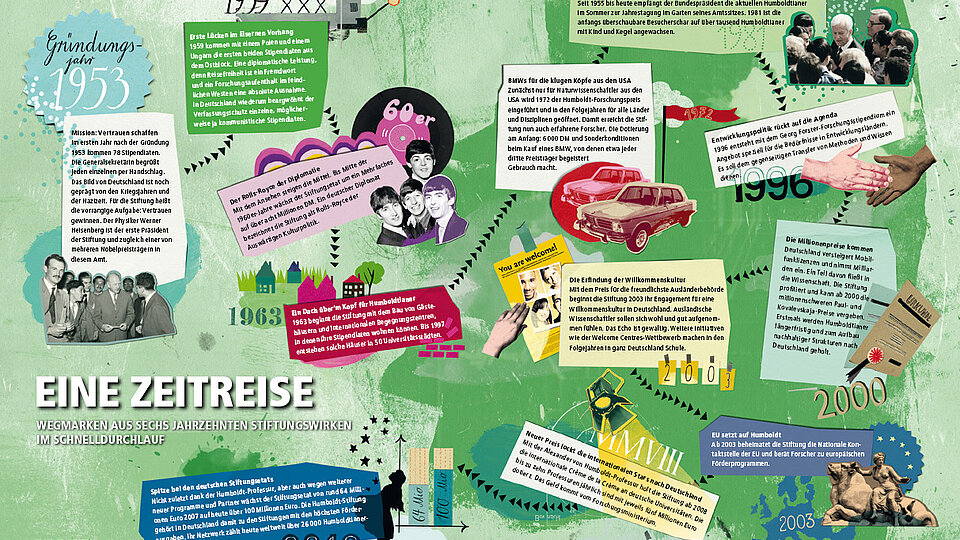Jump to the content
- {{#headlines}}
- {{title}} {{/headlines}}
There are not many international brands that have retained their essence for the last 70 years. Market conditions change ever faster and more radically. Disruption reshuffles the deck. Firms that are not quick enough to respond to technological change disappear, which is why former market leaders like the film manufacturer Kodak are history. Or, like the Finnish tech producer Nokia, they become insignificant in what was their specialist field. Even today’s powerful tech giants like Meta (formerly Facebook) or Alphabet (Google) are wondering how long their business model will last given the way AI is transforming the online world.
If you were looking to compare the Alexander von Humboldt Foundation with a brand, you might hit on Coca-Cola. The American concern has been successfully marketing its soft drink around the world for decades. Sometimes with sugar and caffeine, sometimes without, but effectively unchanged according to the same secret formula allegedly hidden away in a safe. Just like the soft drink giant, the Foundation has not fundamentally altered its portfolio since it was established in 1953: it grants fellowships and awards to talented junior researchers as well as to top scientists and scholars from all over the world who come to Germany to work and become part of a world-spanning research network on the strength of this sponsorship. What is it that makes this portfolio so successful to this day? Does the Foundation have a well-kept secret formula of its own? There is nothing very secret about the first part of the winning formula. It is the Foundation’s adaptability and willingness to drive change (see the timeline): from inventing the culture of welcome via introducing the multi-million Alexander von Humboldt Professorship for the strategic internationalisation of German universities through to the safeguarding programmes for researchers at risk or peer circle reviewing, which is set to take the pressure off the review system.
Research as a means of international understanding and diplomacy
The second part of the Humboldt winning formula, on the other hand, includes ingredients that are unique in their composition and have indeed remained unchanged for the last 70 years. Unlike most research funders, the Foundation does not sponsor projects, but people. And it does so on a permanent basis, usually for the researcher’s entire working life. It extends trust and independence irrespective of discipline or nationality and fosters a network in more than 140 countries. In doing so, it regards research as a means of international understanding and diplomacy. Recently, however, the concept of (re-)establishing relations through dialogue has come under criticism. Does Russia’s war with Ukraine, do system conflicts with countries like China and the trend towards deglobalisation herald the kind of disruption that could fundamentally alter cross-border research collaboration and thus the Humboldt Foundation’s very formula for success?
The Foundation is responding by honing its tools to ensure fair cooperation with regard to data protection and intellectual property and to rule out cases of dual use, that is, the military use of research results. But it is not changing its basic formula. It will continue to focus on international exchange and the freedom of science. The continuing high demand for Humboldt Fellowships, the kudos, the positive effect on academic productivity and cross-border networking evidenced in evaluations and, last but not least, the positive feedback from sponsorship recipients themselves all confirm the effectiveness and attractiveness of the formula. Trust, independence and diverse perspectives fuel academic performance and creativity. Both are urgently required if we are to meet the cross-border challenges inherent in climate change, ageing societies, pandemics and the societal impact of new technologies like artificial intelligence. The Humboldt brand is still needed.


